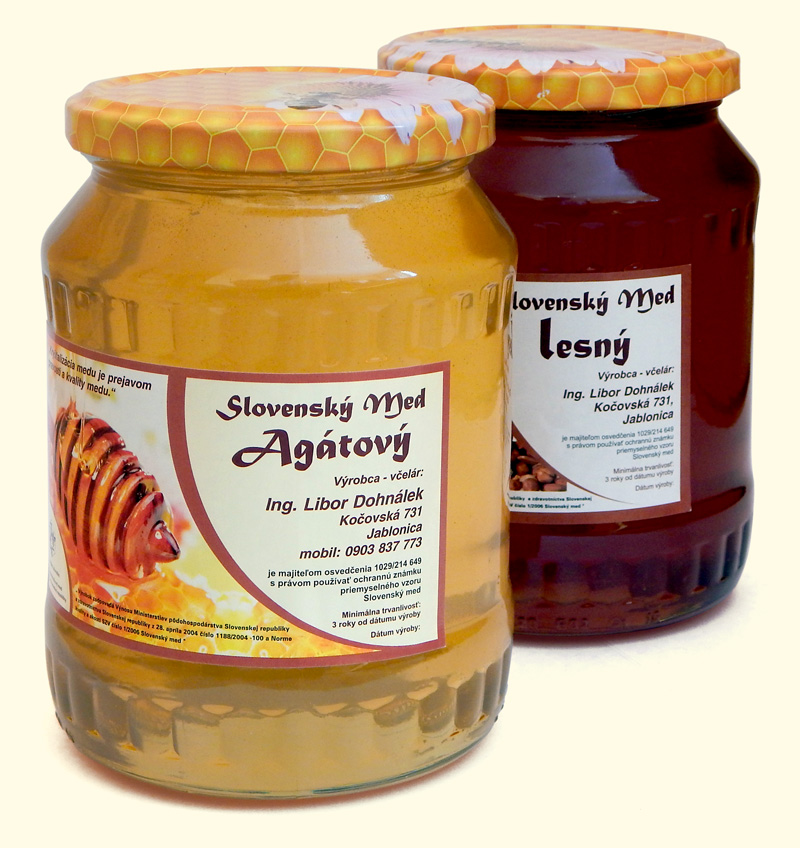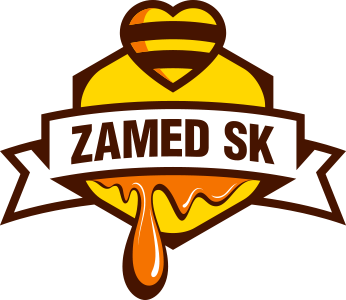The story
My Name Is Libor Dohnálek, I come from Jablonice in the Záhorie region and I am the owner and the executive manager of ZAMED SK, s. r. o.My relation towards nature has been built since I was a kid (despite my family prerequisite – my father is a car mechanic) and I have sealed that relation by graduation at the Secondary school of Forestry in Liptovský Hrádok and with another five years of studies at the Faculty of Forestry of The Technical University in Zvolen.
My beekeeping had begun immediately after my graduation at the university in 2001. My first five years of beekeeping was actually another school for me. At first, I have watched and helped Ing. Gabika Sládková when she had been working with bees and through this experience I started to learn this noble craft. Only then, when I have accumulated sufficient knowledge and skills, I have founded my first eight bee colonies. Recently, I have nothing but one hundred families in the hives made in my own workshop. I am using low-frame hive system and the Langstroth frames system.
As my journey towards bee-keeping itself started as a lone ride, so it remained a lone ride. However, on the other hand, it is the best way of relaxing to leave house for a moment and run away from everyday worries and just come into the nature and to „talk“ with my bees.


My nickname „Srdco“, „Srdénko“ (means Heart) have emerged during my university studies and my friends are still calling me that way.
Products
I am committed only to the production of the nectar Honey, I am not offering honeydew honey or any other beekeeping products.
in the Lesser Carpathians area, in which I am placing my hives, allows me and my bees to produce Rapeseed, Black Locust, Lime and very popular Forest Honey.
All kinds of honey used in the right amount support the Nervous System, the Blood Circulation, the Immune System and it is beneficiary for the Digestive Tract.

About the Honey
From the chemical viewpoint, honey is concentrated aqueous solution of the sugars. Bees are sucking in the sweet juices of plants (nectar from the flowers or honeydew from the leaves and needles) to the honey pouches and they are enriching it with the enzymes from their glands in pharynx. Enzyme invertase splits saccharose (beet sugar) to glucose (grape-sugar) and fructose (fruit sugar). This way bees produce liquid called „slatina“ which is stored in the honeycombs of a hive and it must be concentrated. Bees constantly transfer the slatina from cell to cell, and with constant fanning of their wings they spur the warm air which causes remaining water to evaporate. Slatina is constantly in motion until it thickens to the necessary – i.e. 20% of water. The major part of excess water must be evaporated in just one day. Maturation of the Honey in cells – the evaporation and enrichment of enzymes – takes from 3 to 5 days. Mature honey is then sealed in cells by the bees with a thin layer of wax.
- Connector.
Crystallizing
Crystallizing of the honey is a natural process which depends on several factors. Crystallizing starts when the honey – as a solution of sugars – is saturated with a specific sugar. The Saturation level of particular sugars is different with each sugar so honey differs according to the proportion and the concentration of various sugars which it contains.
- Connector.
The Microwave
Microwaving of the crystallised Honey is not recommended – it is not possible to control the temperature of heating. Melted honey is accumulated in the upper parts of the volume and it can be caramelised, while in the middle of the heated amount it is still solid. Such heating destroys all enzymes and honey becomes worthless sweet fluid.
- Connector.
Hot tea
Current habit of Slovak households – to sweeten just infused hot tea with the honey makes no sense. High temperatureof the water destroys all valuable components of the honey and it (similar to microwave heating) becomes merely an artificial sweetener. In order to preserve all the work of bees and the bee-keeper, let the tea cool down to 35 – 40°C before sweetening.
- Connector.
Storage
Honey must be stored in a cool (less than 15°C) dry and dark environment without access of major odours, in hermetically sealed containers which will prevent water absorption from the surrounding area.
Composition of Honey
Sugars (about 80 – 85%)
Fructose, glucose, saccharose, melecitose, dextrins
Representation of individual sugars is amended according to the type of Honey.
Water (max. 20%)
Minerals (about 0.5%)
Boron, vanadium, potassium, calcium, magnesium, manganese, molybdenum, nickel, titan, zinc
The Honey is quickly and nearly 100% absorbed into the blood and thus increases contents of minerals in it.
Enzymes
Invertase, diastase, catalase
Free organic acids
Vitamins
hlavne vitamíny skupiny B
Inhibin
Thanks to the Inhibin the Honey never become moldy and any pathogenic organisms are reproduced in it, it is Anti-bacterial.
Contact
- Connector.Connector.
Address
192 Jablonica 906 32
- Connector.Connector.
Phone
+421 948 188 908
- Connector.Connector.
E-mail
dohnalek@zamedsk.sk
